South Bali
South Bali is the most developed and tourist-centric part of the island, It is known for its vibrant nightlife, beautiful beaches, and bustling urban centers. Vibrant and energetic areas like Kuta and Legian, stylish and upscale areas like Seminyak, bohemian and laid-back Canggu, luxurious and resort-oriented Nusa Dua, relaxed and beachfront Jimbaran, scenic and cliffside Uluwatu, tranquil and family-friendly Sanur all form part of the Southern part of Bali Island. There is an absolute variety in the attractions located here. To check out other tourist spots click here.
Some of the major ones that we visited are as under:
I Gusti Ngurah Rai International Airport
Bali airport also named I Gusti Ngurah Rai International Airport is in itself a place to explore. When you land at the airport in Bali check out the indigenous art displays throughout the airport. There are beautiful wooden architectures on display as well. The pillars of the airport have bamboo finishings. The architecture of the airport gives a very natural persona to the airport.
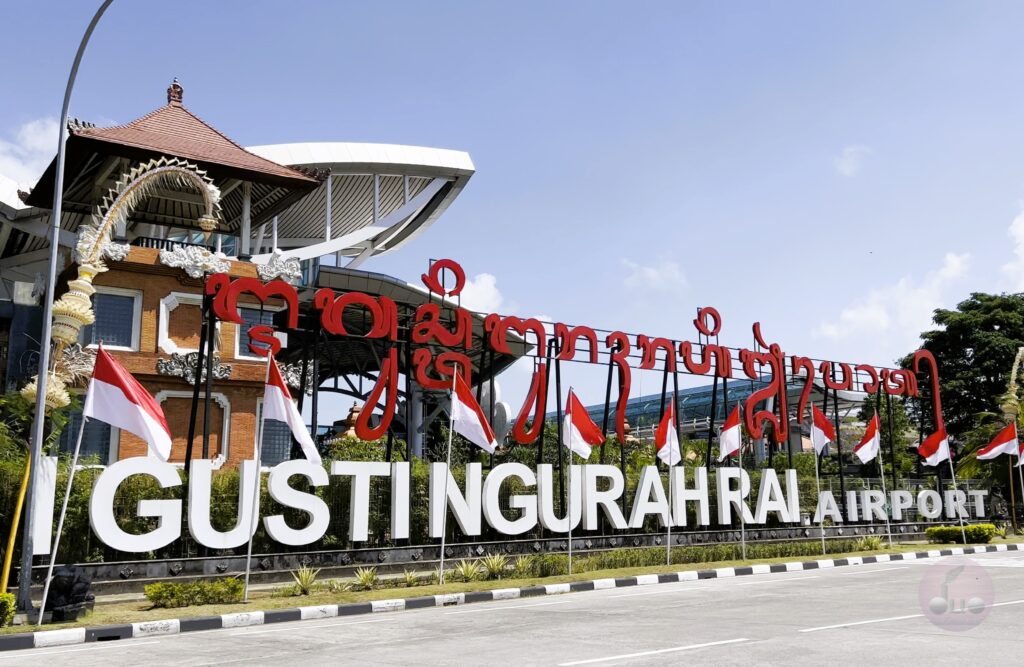

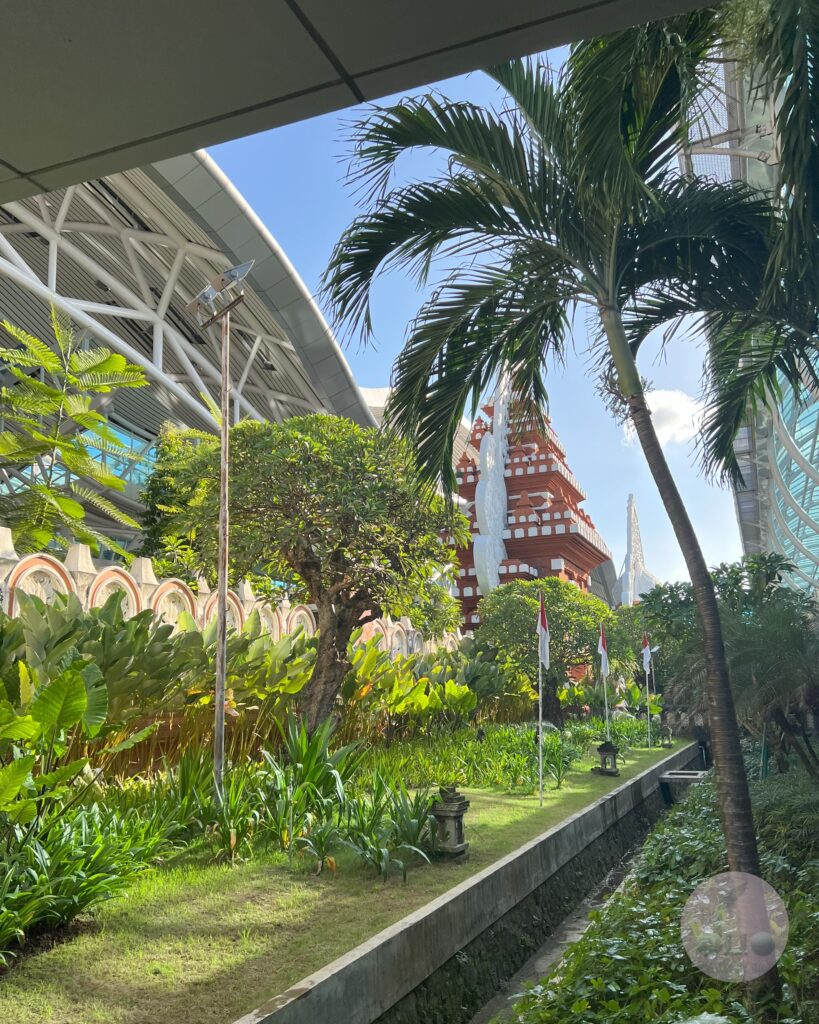
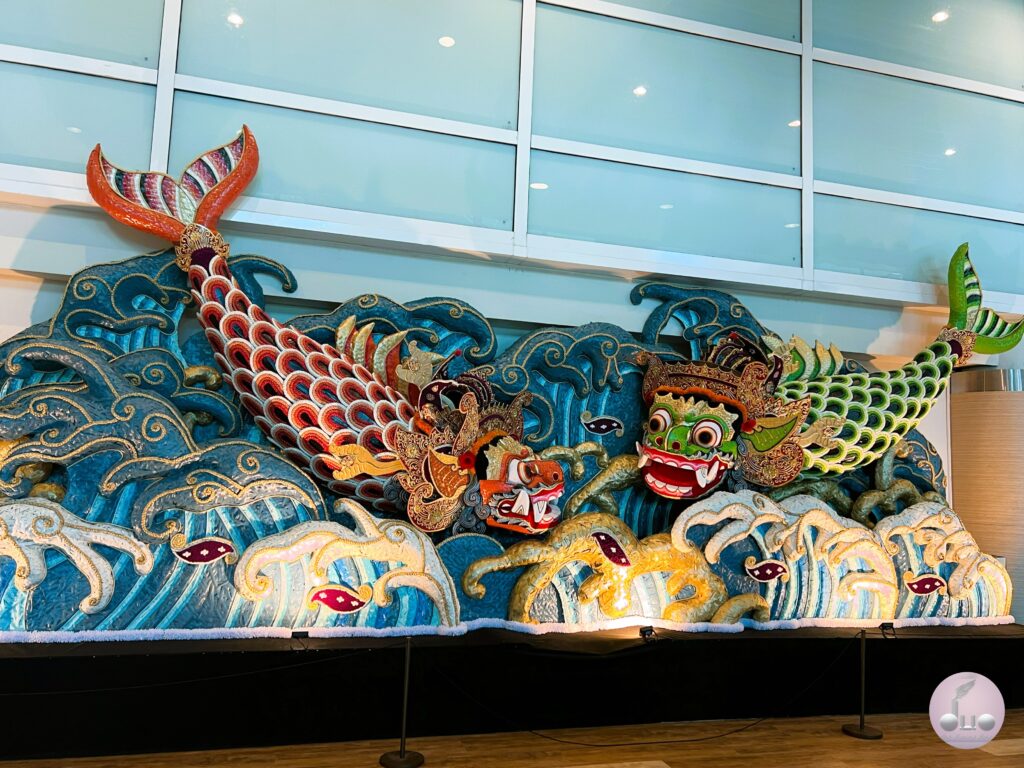
While landing you can view one of the most stunning scenery ever at any airport. At the departure gates you will get views of the sea shore where planes will be continuously taking off and landing.
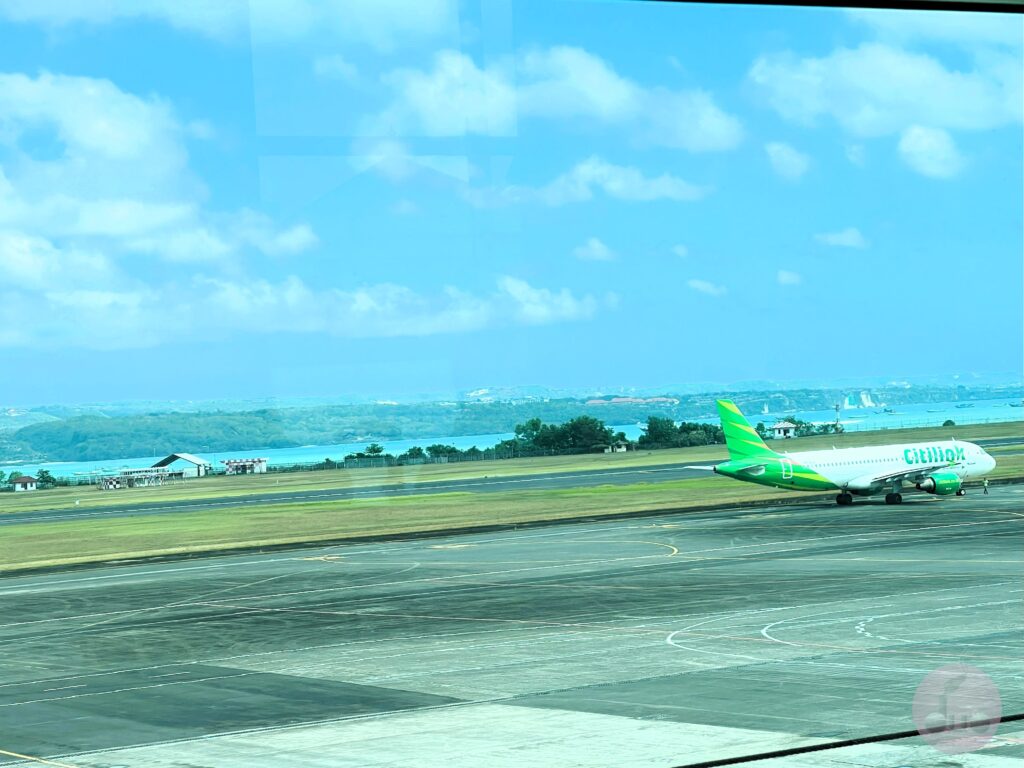
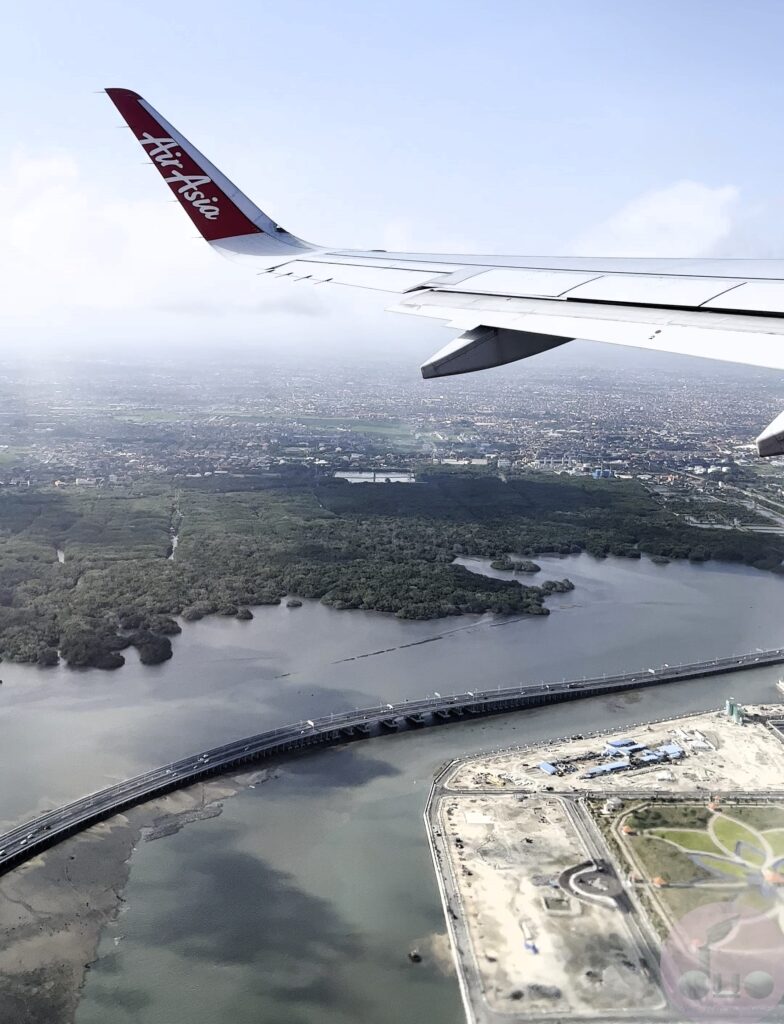

Nusa Dua Peninsula
The Nusa Dua Peninsula is a renowned resort area located on the southern coast of Bali, Indonesia. Nusa Dua is a gated resort complex, providing a secure and exclusive environment for visitors. The area is known for its well-maintained grounds and upscale facilities. The Nusa Dua Peninsula is a haven for travelers seeking a luxurious and tranquil escape. Whether you’re interested in enjoying water sports, exploring cultural attractions, or simply relaxing on pristine beaches, Nusa Dua offers a refined and exclusive experience on the beautiful island of Bali. There is a minimal entry fee of 10.000 IDR per person.

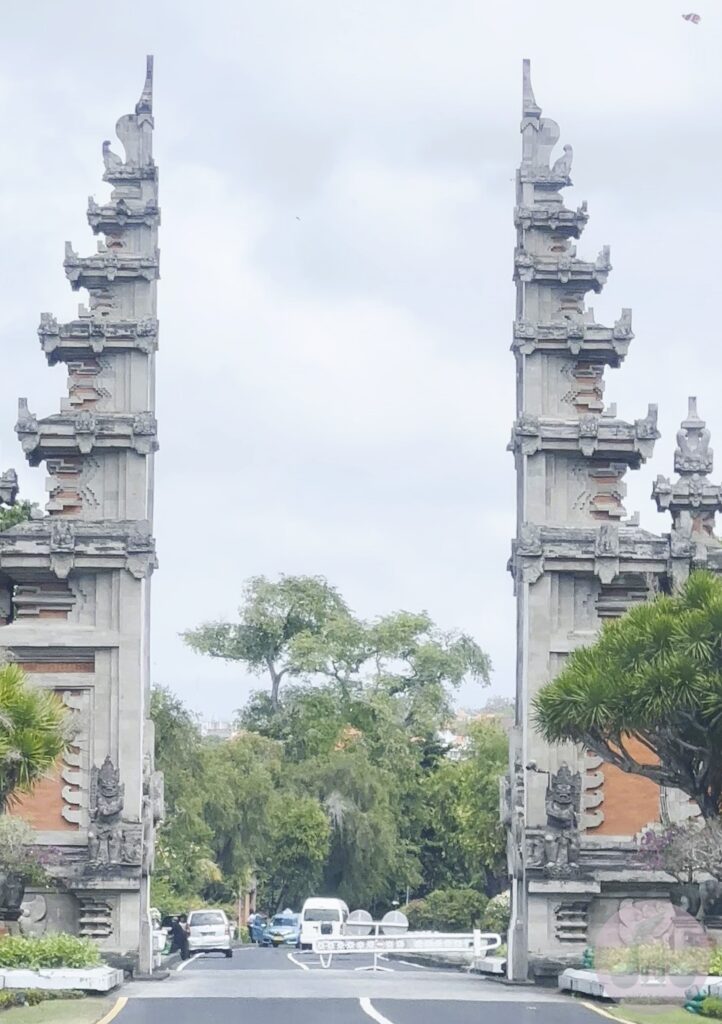

Beaches, Cliffs and Water Sports
The peninsula boasts some of Bali’s most beautiful beaches with soft white sands and calm, turquoise waters. Popular beaches include Geger Beach and Mengiat Beach. Water Blow is a natural phenomenon where powerful waves crash against the rocky cliffs, creating a dramatic display of seawater splashing high into the air. It’s a popular sightseeing spot. Nusa Dua offers a variety of water sports and recreational activities, including jet-skiing, parasailing, banana boat rides, and more. Many resorts have their private beaches with water sports facilities.




Resorts, Convention Center and Museum
Nusa Dua is home to the Bali Nusa Dua Convention Center, making it a popular destination for international conferences, exhibitions, and business events. Nusa Dua is synonymous with luxury resorts and five-star hotels. The area is dotted with high-end accommodations that offer world-class amenities, spa facilities, and personalized services. Museum Pasifika, located in Nusa Dua, is an art museum showcasing a diverse collection of traditional and contemporary art from the Asia-Pacific region. It provides insights into the cultural richness of the region.
Garuda Wishnu Kencana Cultural Park (GWK Culture Park)
GWK Cultural Park, is a prominent cultural and tourist destination located in Jimbran Regency on the south of Bali. The park is centered around the massive Garuda Wisnu Kencana statue, a cultural and artistic icon representing the Hindu god Vishnu riding the mythical bird Garuda. The statue which took 25 years to build, has a height of 121 meters (397 feet). It is one of the tallest statues in the world. Designed by renowned Balinese artist Nyoman Nuarta, the statue symbolizes the eternal and harmonious connection between humans and the divine. This statue is visible from the flight much before the plane lands and is an identification symbol of Bali.

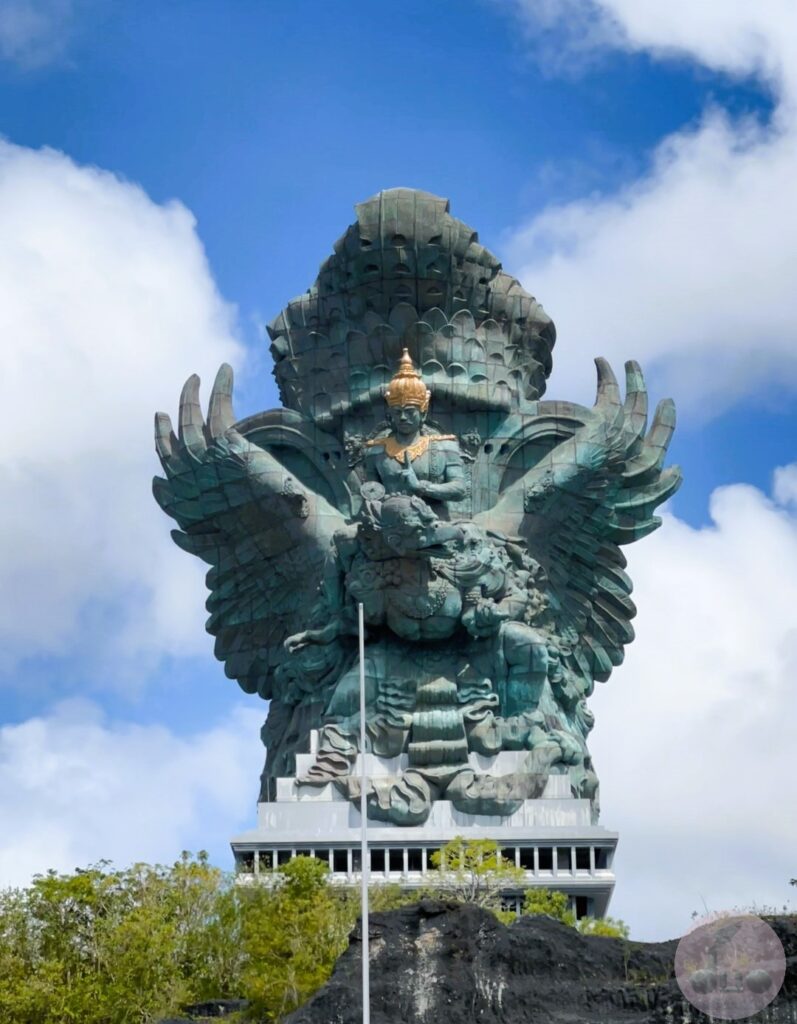
Complex
The park features a large amphitheater known as the Lotus Pond, which serves as a venue for cultural events, concerts, and performances. The open-air setting offers panoramic views of the surrounding landscapes. The amphitheater regularly hosts traditional Balinese dance performances, showcasing the island’s rich cultural heritage. These performances include the Barong Dance, Kecak Dance, and more. Visitors can enjoy street theater performances that provide insights into Balinese folklore and mythology. These performances often take place throughout the park, offering an immersive cultural experience.

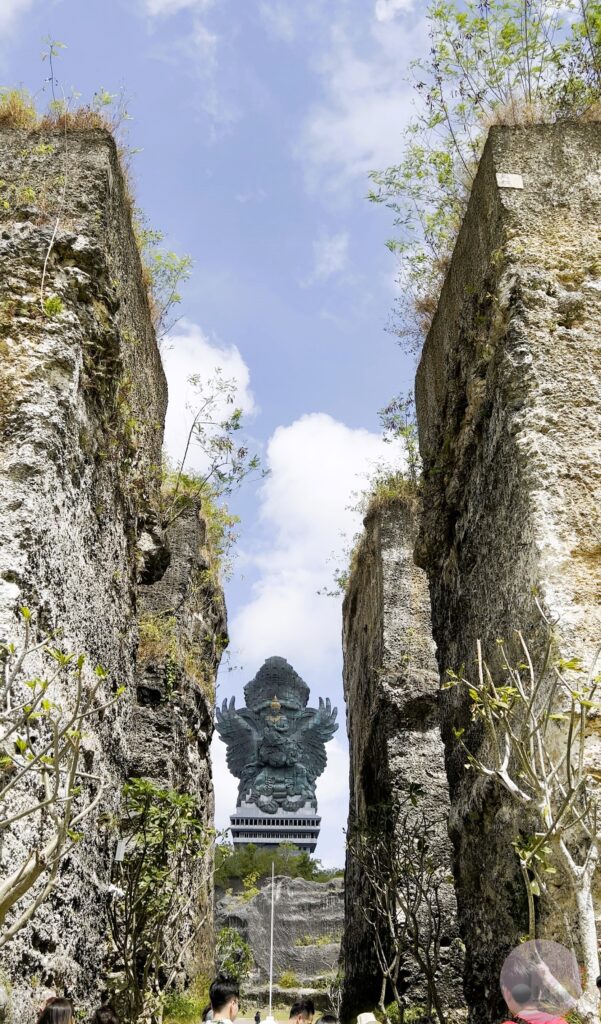



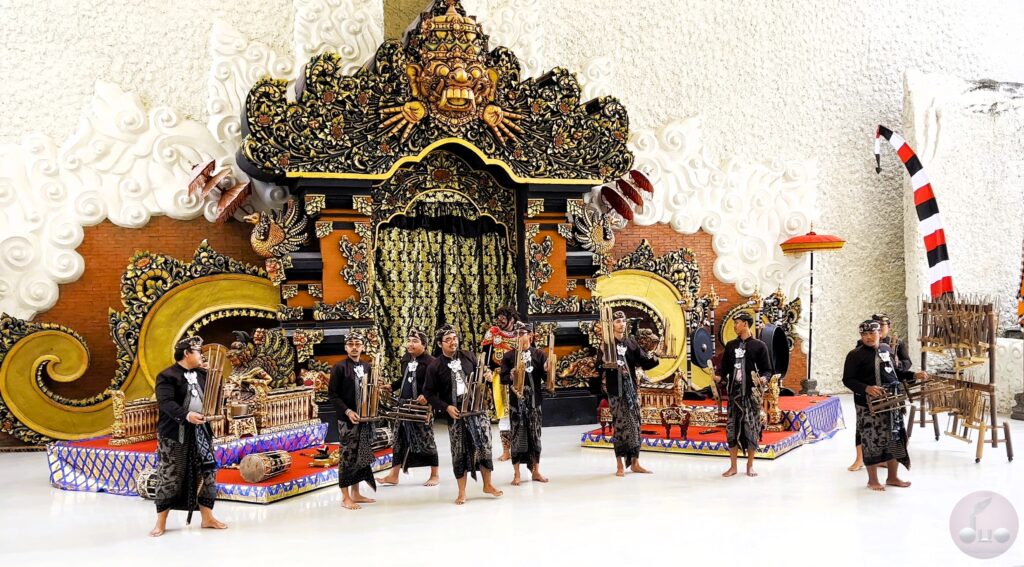
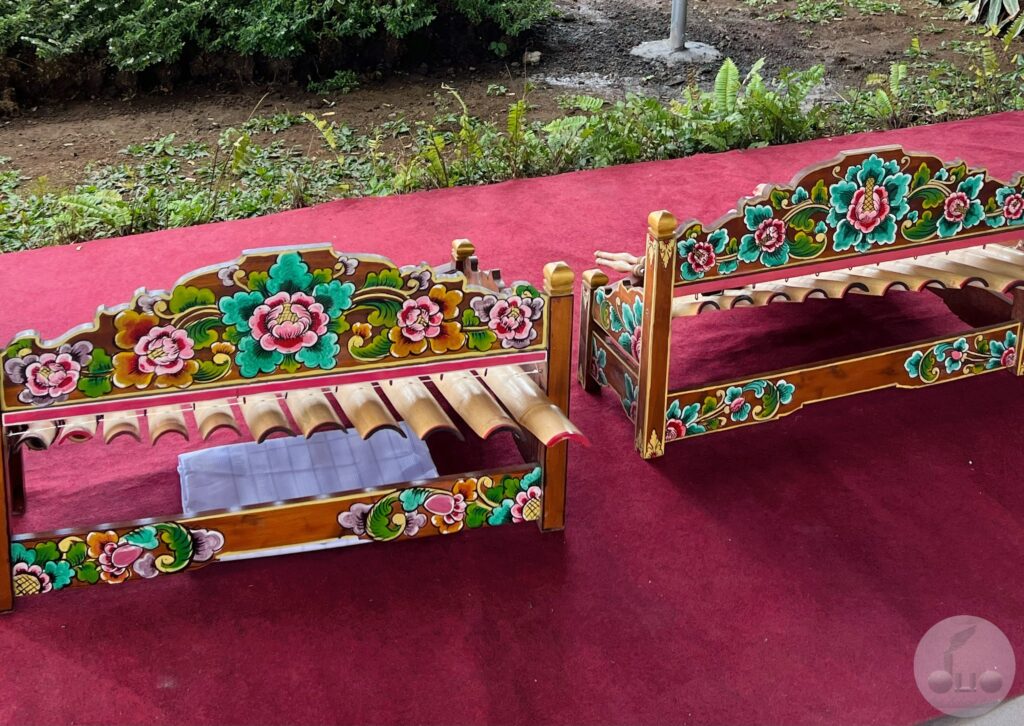
The Wisnu Plaza and Garuda Plaza are other two important structures where visitors can relax and click pictures. The park includes exhibition spaces where visitors can explore art installations, sculptures, and galleries showcasing Balinese and Indonesian art. You may also purchase separate tickets costing 150.000 IDR to go to the 23rd floor of the statue to obtain a panoramic view of Bali. Positioned on a hill, GWK Park provides breathtaking panoramic views of the surrounding landscapes, including the Indian Ocean and lush greenery. It’s an excellent spot for photography and enjoying the natural beauty of Bali.


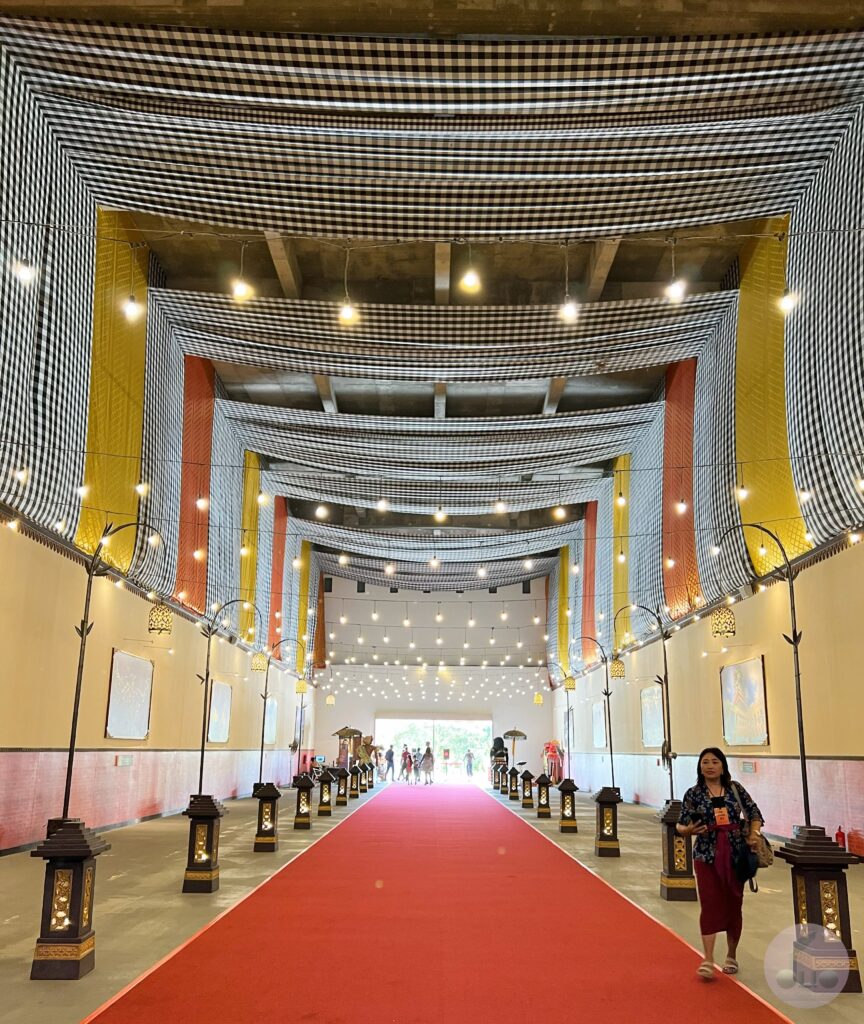
Shopping and Dining
The aim of the park is to preserve and promote Indonesia’s cultural heritage. Throughout the complex, visitors can find displays and installations that highlight various aspects of Balinese and Indonesian traditions. The park includes shopping and dining areas where visitors can purchase traditional Balinese crafts, souvenirs, and enjoy local cuisine. The restaurants and cafes offer a mix of Indonesian and international dishes.
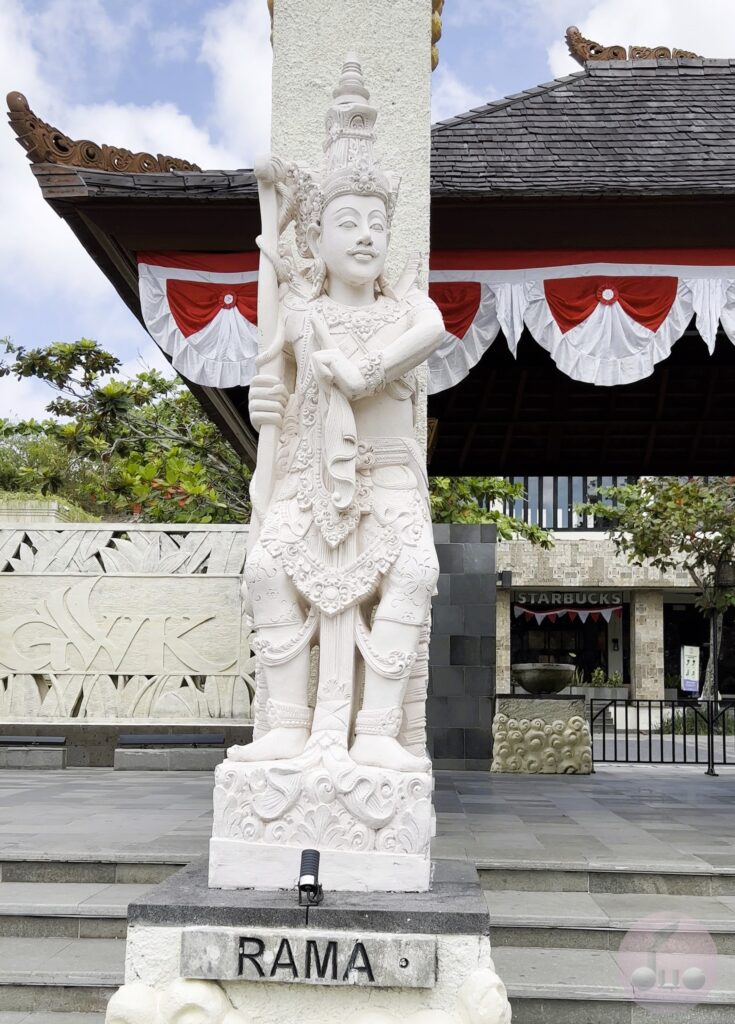
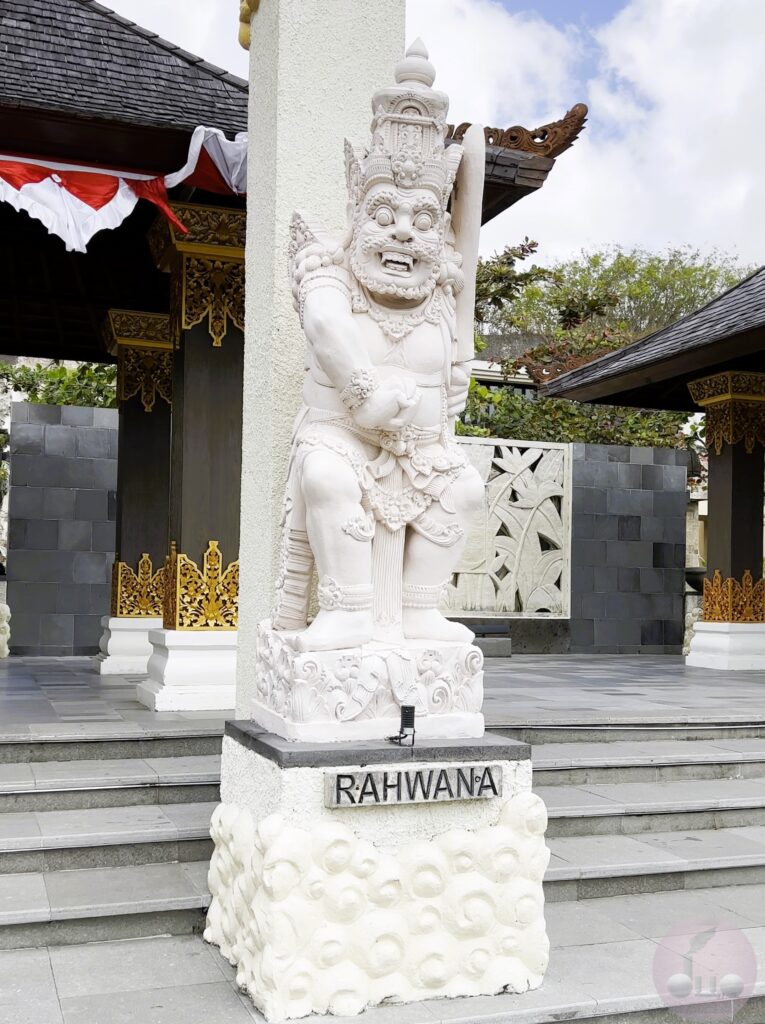
Tickets
Entry tickets to the park cost 125.000 IDR per person. The all inclusive package ticket for a full day trip costs around 300.000 IDR (you can book online here). A regular visit to the park is for one full day including entry, tour, animation shows, galleries, lunch at inhouse restaurants, cultural activities in the park, dance and music performances and tour of the statue but, you may also visit it for a few hours. It is a huge park to cover on foot. There are shuttle buggy services (at added cost of 125.000 IDR) to take you to and from the statue if you find it difficult to walk.
Melasti beach
Melasti Beach is a beautiful and serene coastal area , part of the Bukit Peninsula, located in the south of Bali. It is known for its pristine white sand, crystal-clear waters, and captivating natural surroundings. The beach is surrounded by towering limestone cliffs, creating a dramatic and picturesque setting. The access road to Melasti Beach winds through lush green landscapes and provides glimpses of the ocean along the way. The journey itself is scenic and adds to the overall experience.

The beach is home to a small temple called Pura Melasti, situated on the cliffs overlooking the ocean. This temple holds significance for Hindu ceremonies and rituals. Melasti Beach is also associated with the Melasti ceremony, an important Balinese Hindu purification ritual. During Melasti, communities gather to perform prayers and cleansing rituals near the coast before the Nyepi (Balinese New Year) celebrations.

The breathtaking views, pristine sands, and dramatic cliffs make Melasti Beach a popular spot for photography in south Bali. The lighting during sunrise and sunset enhances the beauty of the landscape. There is a restaurant by the beach and a paid washing area. It offers a quieter retreat for visitors seeking a break from the bustling tourist areas. The entry ticket to Melasti beach is 10.000 IDR per person.
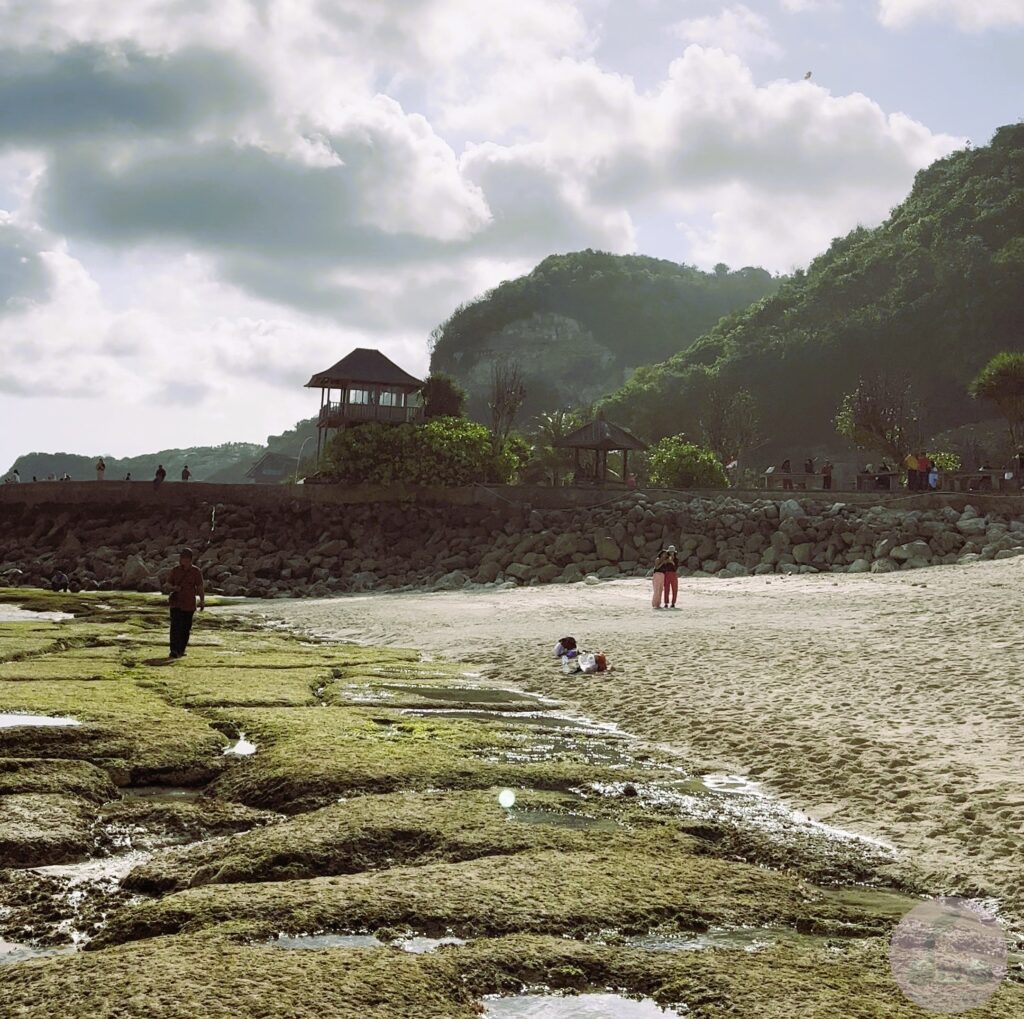

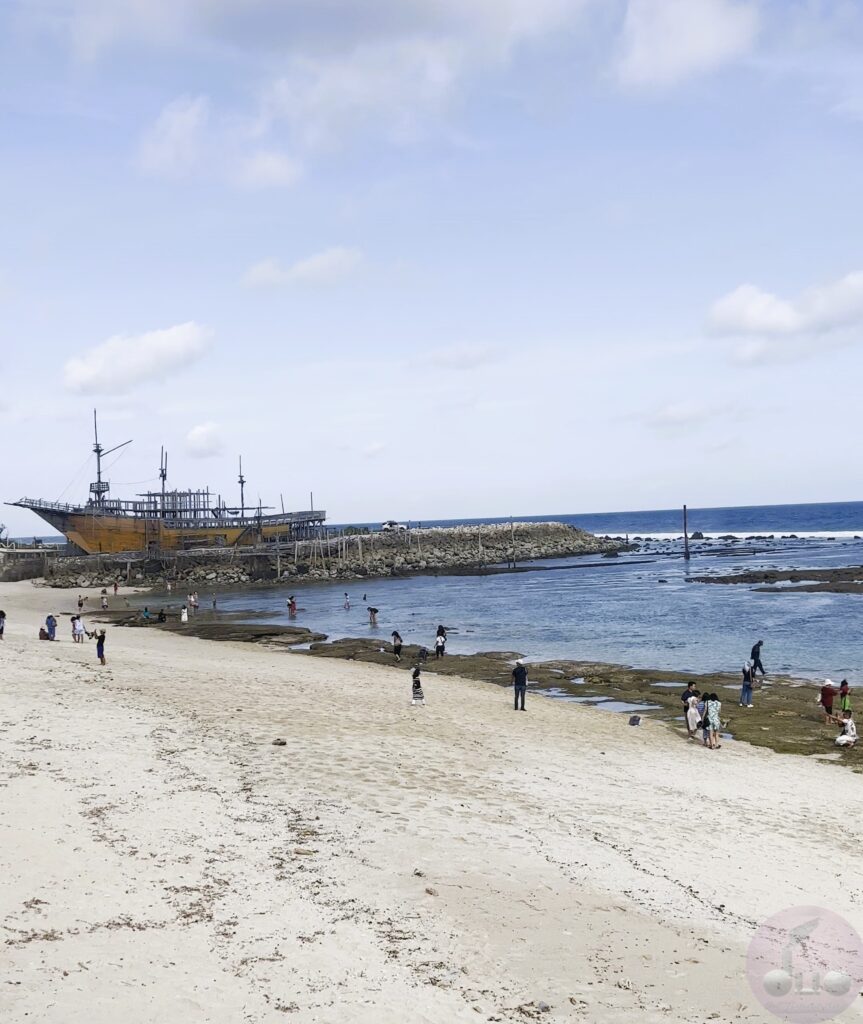
Suluban beach/ Blue Point Beach
Suluban Beach, also known as Blue Point Beach, is a distinctive coastal destination located on the Bukit Peninsula in Bali. Renowned for its unique and captivating features, Suluban Beach stands out among Bali’s many beautiful shores. Suluban Beach is tucked away beneath towering limestone cliffs, creating a hidden and somewhat secret atmosphere. Access to the beach involves navigating through narrow caves and rocky passages, adding an element of adventure to the visit.


Rugged cliffs that provide spectacular panoramic views of the coastline surround the beach. The vantage points along the cliffs are popular spots for photography, especially during sunrise and sunset. The natural rock formations, arches, and caves along the shoreline make Suluban Beach a unique geological site in the south of Bali. Exploring these formations adds an element of natural wonder to the beach experience. During low tide, the beach expands, revealing more of its sandy shoreline and creating natural pools. This period is ideal for exploring the caves and rock formations that become accessible. There is no entry fee at Suluban beach.

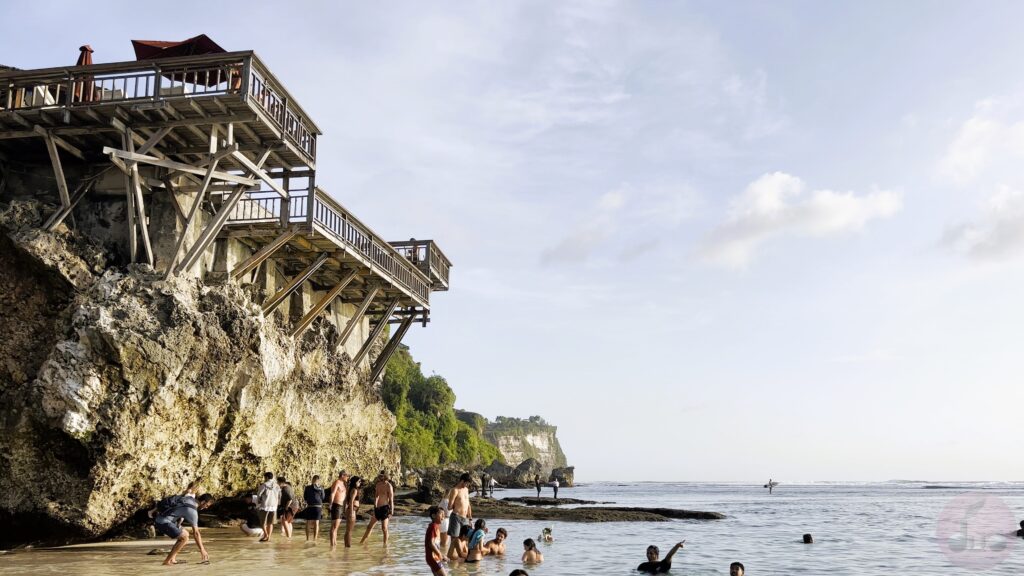

Uluwatu temple
Uluwatu Temple, or Pura Luhur Uluwatu, is a sea temple perched on a majestic clifftop on the southwestern tip of the Bukit Peninsula in Bali. The temple is not just a historical site; it’s a cultural treasure, a vantage point for breathtaking views, and a spiritual sanctuary that beautifully integrates with the natural beauty of its clifftop location. Visiting Uluwatu offers a holistic experience that combines history, culture, spirituality, and the stunning scenery of Bali’s southwestern coast.
Significance and Structure
As one of the nine directional temples meant to protect Bali from evil spirits, Uluwatu Temple holds a crucial role in the island’s spiritual landscape. The Balinese believe that the temple guards the south western corner of Bali and its inhabitants from malevolent forces. The temple itself is an architectural marvel, featuring intricate stone carvings and traditional Balinese architecture. The split gate entrance, or “Candi Bentar,” and the courtyard with various shrines showcase the skilled craftsmanship and cultural richness of Balinese temple architecture. The temple complex includes a cave, known as the “kekeran” or “grilled peanut,” believed to lead to the sea. Exploring this cave adds a sense of mystery and adventure to the visit. The temple complex is also home to a thriving population of mischievous long-tailed macaques. Visitors should to exercise caution and secure personal belongings in the presence of these playful inhabitants.
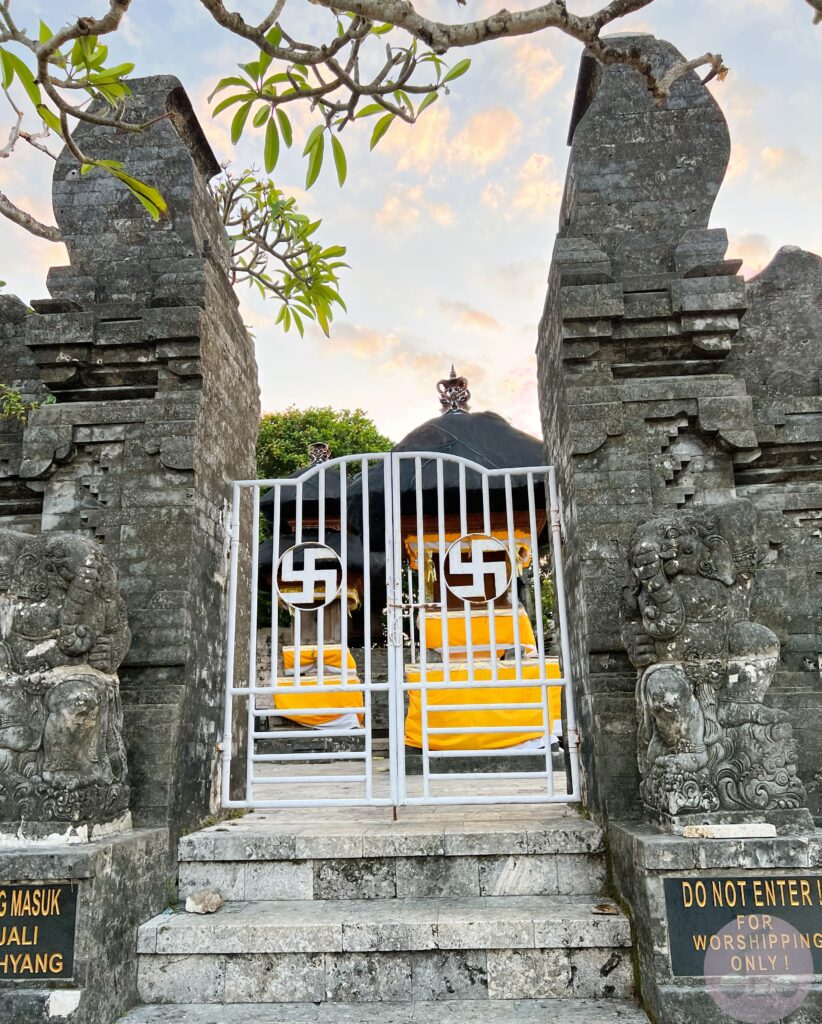
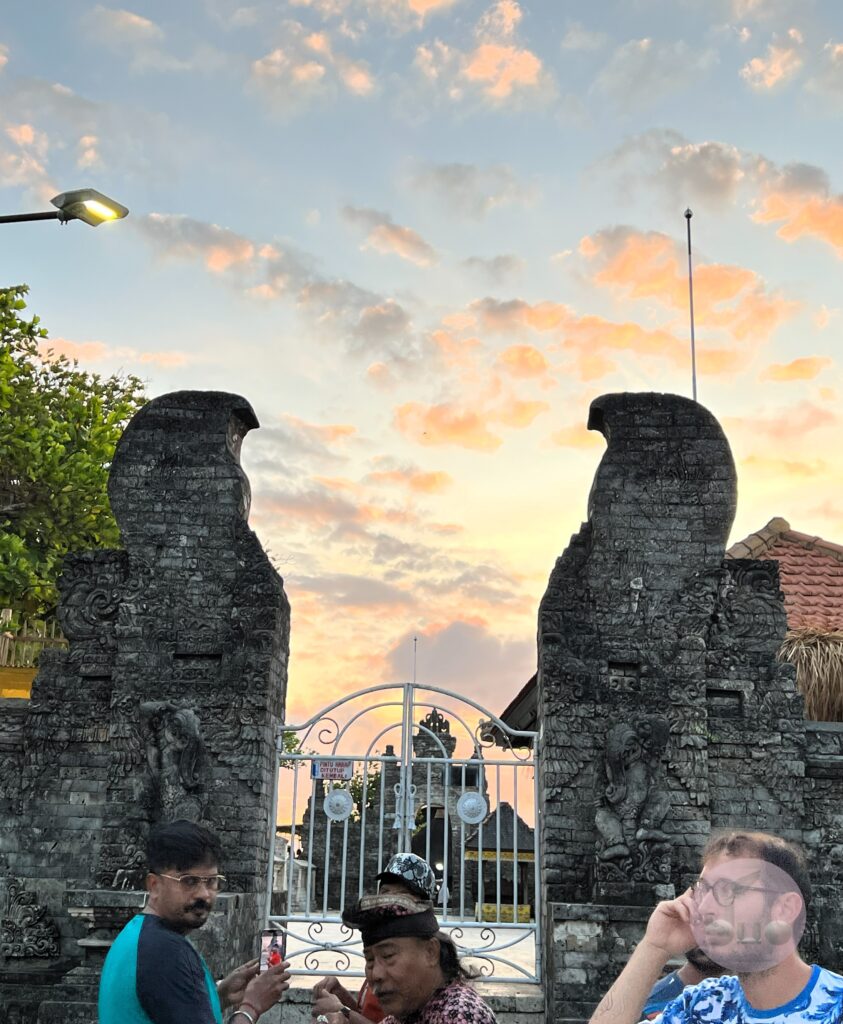
Location
Uluwatu Temple is strategically located about 70 meters above the Indian Ocean, offering breathtaking views of the vast horizon and dramatic sunsets. The clifftop setting allows for a 180-degree perspective, making it an ideal spot to witness the play of colors during sunset. The crashing waves against the cliffs create a mesmerizing soundtrack that complements the visual spectacle. Sunset at Uluwatu Temple is a magical experience. The sky transforms into a canvas of warm hues, casting a golden glow on the temple and the surrounding landscape.
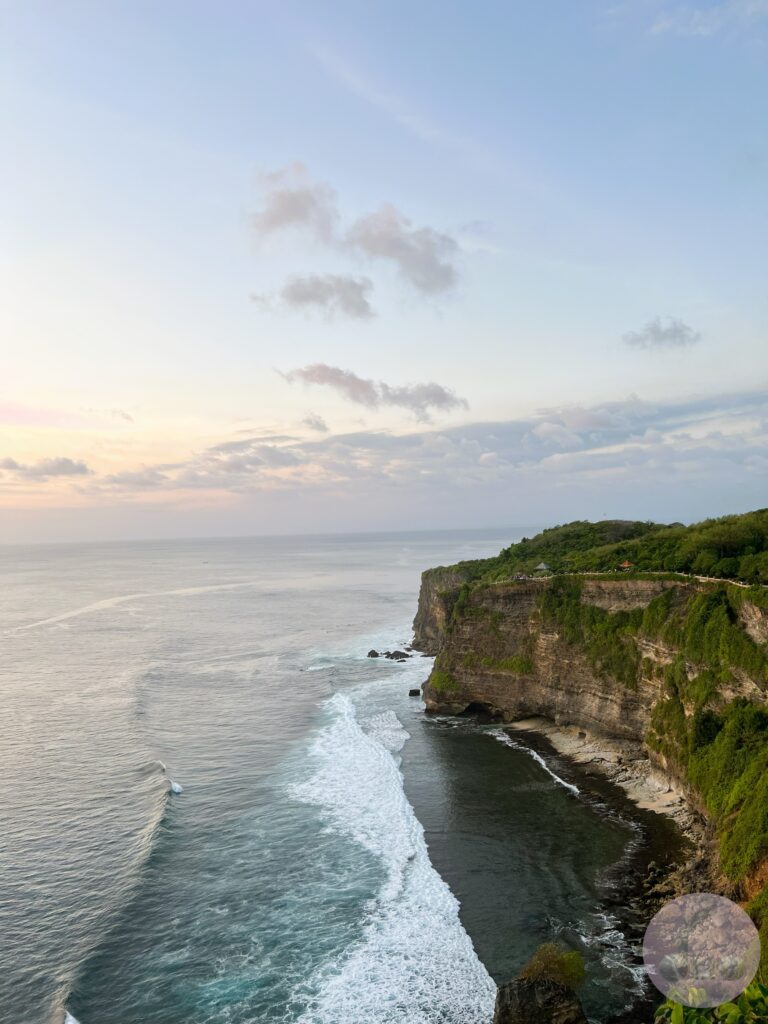

Kecak Dance Performance
Uluwatu Temple not only has historical and architectural significance but also the captivating Kecak dance performances that take place against the backdrop of the setting sun. The dance, depicting episodes from the Ramayana, adds a cultural and theatrical element to the temple visit. The Kecak dance, also known as the “Monkey Dance” or “Tari Kecak,” is a traditional Balinese dance and music drama that originated in the 1930s. It is one of the most iconic and well-known dance performances in Bali, Indonesia. The Kecak dance is distinctive for its use of a large choir of male performers who provide the musical accompaniment using their voices, creating a unique and rhythmic chanting sound. Some variations of the Kecak dance include a fire dance, where the performers dance on burning coconut husks without shoes.
Kuta Beach
Kuta Beach is one of Bali’s most famous and lively beaches, situated on the western side of south of the Bali island. It’s popular for its golden sands, energetic atmosphere, and a wide range of activities. Kuta Beach boasts a wide stretch of golden sands that gently slope into the Indian Ocean. The consistent waves make it an ideal spot for both novice and experienced surfers. Surf schools and board rentals are readily available along the beach.
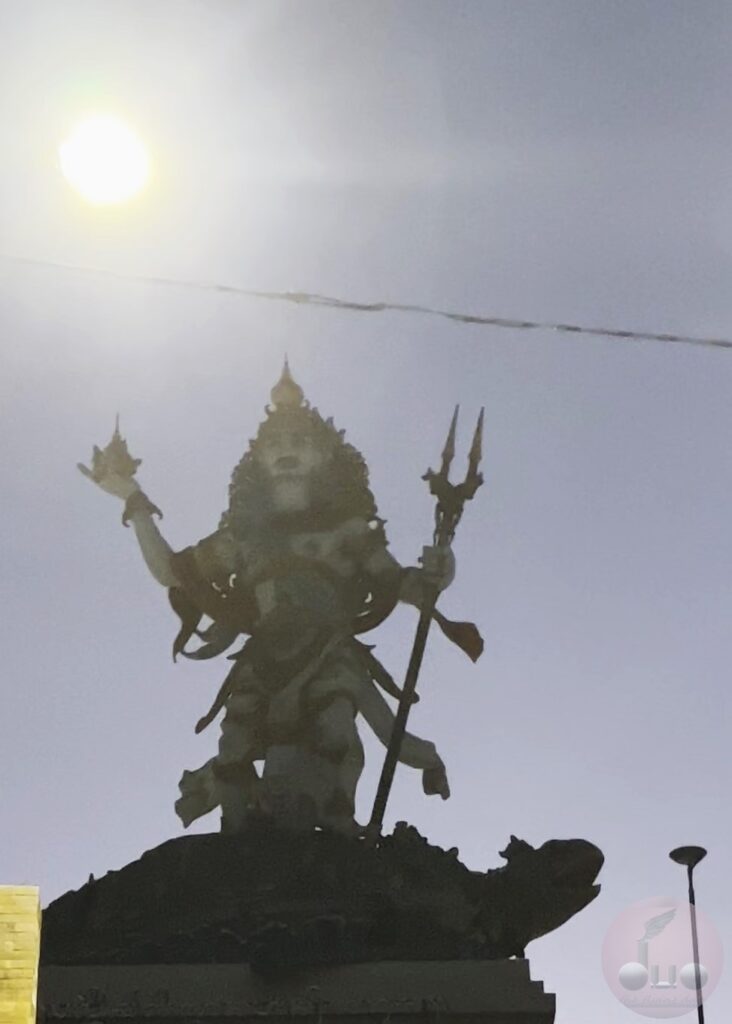
Kuta Beach is a popular destination to catch breathtaking sunsets. As the sun dips below the horizon, the sky transforms into a palette of warm colors, casting a magical glow over the beach. The area surrounding Kuta Beach is a shopping haven. Visitors can explore markets, beachside stalls, and vibrant shopping streets offering a diverse range of goods, from clothing and accessories to traditional Balinese crafts. The Kuta Art Market is a bustling market where visitors can haggle for traditional Balinese items such as sarongs, handicrafts, and souvenirs. Though, we did not find it very appealing. It’s an excellent place to experience the local market culture.

Tanah Lot
Tanah Lot Temple, translated as “Land in the Sea,” has roots deeply intertwined with Balinese mythology and Hindu traditions. Believed to have been founded by the 16th-century priest Dang Hyang Nirartha, the temple is dedicated to the sea spirits and the Balinese sea god, Baruna. Its unique offshore location adds a mystical aura, as it appears to be adrift on the ocean during high tide, while accessible by a land path during low tide.
Location
Nestled on the southwestern coast of Bali, the enchanting Tanah Lot Temple stands as a testament to both spiritual reverence and architectural splendor. Perched atop a majestic rock formation, surrounded by the crashing waves of the Indian Ocean, Tanah Lot is one of the most iconic and revered sea temples in Bali, drawing visitors from across the globe. The accessibility of the temple depends on the tides. During low tide, a pathway emerges, allowing visitors to walk to the base of the temple. High tide, on the other hand, presents a dramatic view of Tanah Lot seemingly floating on the waves.
Structure
The temple’s architecture seamlessly integrates with its natural surroundings. Built on a rocky outcrop, the tiered shrines and pagodas showcase traditional Balinese design, adorned with intricate carvings and ancient sculptures. As the sun sets, the silhouette of Tanah Lot against the vibrant hues of the sky creates a mesmerizing spectacle, making it a photographer’s paradise. Tanah Lot is famous for its breathtaking sunset views. Arriving in the late afternoon allows visitors to witness the temple bathed in the warm glow of the setting sun.

We were a bit late to arrive at Tanha Lot temple so we missed the sunset. Moreover, since it was Kuningan, the temple was full of locals in their traditional attire attending the ceremonies at the temple. The entire temple campus was full of people doing ceremonies. We were allowed inside the campus although the temple visit hours was over because of our guide Mr. Nyuman Kamar. We were fortunate to have witnessed a festival celebration firsthand.

